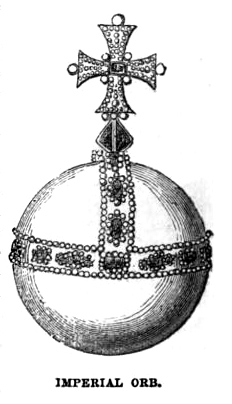The recently acquired space heater was doing its job on a morning where temperatures struggled to reach zero. I initially did not think I would require it as I trusted the PowerPC Mac G4 tower would more than keep me toasty as I put it through its paces. There is a fine line between smart and stubborn, however, and at my wife’s urging I retrieved the heater in order to warm my hands.
I am writing on Pages ’09 again, thankful for a full version of the software instead of the stripped down iWork version of OS X 10.9 Mavericks. Some people have gotten on me for criticizing Mavericks in recent columns. Readers have pointed out the problems with Gmail not working properly in Mail have been addressed by incremental updates to the operating system released by Apple. Other folks have said the Western Digital external hard drive problems reported with Mavericks are not attributable to Apple since drives formatted with Apple’s Disk Utility (instead of manufacturer disk formatting software) do not experience failure. Yet more have said there are fixes for Mavericks’ SMB network drive access issues with Windows PC’s on mixed platform environments that users can employ (until Apple addresses this embarrassment with Mavericks).
I say a new year gives people, businesses and companies alike the chance to start anew. We all know about making New Year’s resolutions that don’t stick. Apple has never been one to tip their hands when it comes to the direction they’re taking. It is somewhat disconcerting, though, that instead of leading the pack and setting cool new trends, Apple finds itself in the unenviable position of being in full blown reactionary mode.
What is full blown reactionary mode?
In a nutshell, reactionary mode is damage control and spin born of defensiveness. Of course Apple has enough market share advantages in the tablet and smart phone spaces with iPads and iPhones, respectively. This segment lead has not come without its share of expense and neglect. The Mac is what initially made Apple great. The Mac OS was part and parcel right in step with the Mac on that front. One thing I have been asked about but have not addressed in previous columns was whether or not it would be to Apple’s advantage to consider licensing the Mac OS again. The Gil Amelio era at Apple was a time when you could find the Mac OS on computers other than Apple’s. During this period of the Mac clone in the mid 90’s (anyone remember StarMax, Umax and Power Computing?), Mac users enjoyed brief flirtations with hardware other than Apple’s to run the company’s “crowned jewel” on: the Mac OS.
The clones of that period combined Apple’s operating system with then state of the art power–and all for less than what Apple was charging for its Power Mac line. I made the unfortunate purchase of a Mac Performa 5215 CD in 1995; unfortunate because it was a Low End Mac Road Apple in regards to its compromised performance, but fortunate because it allowed me to learn how to realize the most computing gains from an underpowered system through software and hardware tweaks.
Steve Jobs was always dead set against the Mac OS on anything else but Macs and quickly went about discontinuing the cloning and licensing-of-the-Mac OS experiment, upon his return to Apple in 1997.
Apple OS no longer ‘crown jewel’
Despite Apple’s iPhone deal with China Mobile, it needs to do something with the Mac OS to restore luster to the crown jewel. I get that every Mac user who can will eventually move to Mavericks (no matter how unfinished it is now). The Mac OS can no longer be called Apple’s crown jewel, however, simply by virtue of the fact it is available free of charge; jewels have to cost something. Making it free is the clearest sign yet that Apple no longer considers it as valuable an asset as say its iOS, iPad or iPhone. The move to mobile emphasis for the company is no longer in question. While the release of a new Mac Pro was considered by some a sign that hell has frozen over, I suggest it was more a token gesture by the great company to power users who had remained loyal for so long a time.
The writing is on the wall for OS X 10.6.8 Snow Leopard in terms of its receiving further security updates from Apple, with Snow Leopard not getting a recent Safari update. Apple has never been transparent about its OS support map, leaving users to utilize tarot cards to figure out when support will end. While Microsoft clearly outlines its Windows OS roadmap, Apple has preferred a more cryptic stance.
I’d like to recommend something different, if not radical, to Apple for 2014. Instead of worrying about bigger iPhone screens or iPad Airs fitting in manila envelopes, think about re-sharpening quality focus in 2014. Steve Jobs is gone, Tim Cook is firmly in charge, the Mac OS is free and Colorado residents have legal marijuana. I have intimated Apple feels its operating system is less valuable than it once was. If this is the case, why not revisit the idea of Mac clones? Hackintoshes have already been around for as long as OS X. They are not something new. Why not share in the fun of running the Mac OS on all Intel hardware and not just Macs without fear of recrimination? Why not reinitiate the licensing of the Mac OS so it might run on Dell, HP, Acer and ASUS boxes, in turn reinstating the value of this proud crown jewel once and for all? After current Snow Leopard, Lion and Mountain Lion users upgrade to Mavericks, whom will Apple turn to in order to grow its installed OS user base again? You got it…send in the clones.





Guy
I remember the Mac clones and remember them well. I had a Umax C600 (603e) that I fondly recall as one of the best and most reliable Macs I’ve ever owned. On the other hand I also had an MPower 604 clone that was without question the biggest POS (and this from someone who used a Performa 575 for 4 years). Apple could return to clones but they would have to do it smart. Step 1 stop making Mac Minis, iMacs,Macbook Pros, Airs, and so on. Have common motherboards for each segment that cloners would have to use to be certified with a sign on chip preventing just anyone making one. Sell OS X licenses for no more than $50 to the cloners with free upgrades for supported hardware for the end users. Heck, with Apple no longer really in the manufacturing business anymore, we aren’t really that far from it now.